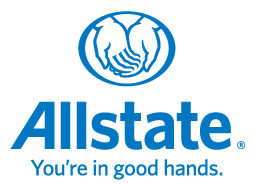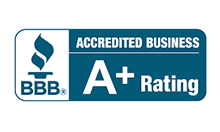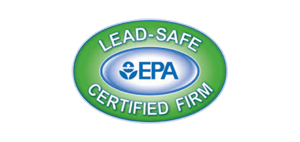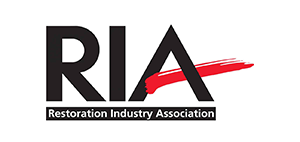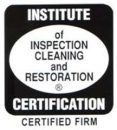In 2019, a review showed no direct link between mycotoxins in the air and illness. However, mold, especially black mold like Stachybotrys chartarum, is a big risk for health. This is especially true for those who have breathing issues or weak immune systems. If you find yourself with allergies, a stuffy nose, or bad symptoms, it’s important to know about mold.
Exposure to mold can cause health issues. A 2016 study found that high levels of mold in homes and on mattresses can lead to asthma in kids. It’s crucial to get rid of any mold you find, no matter the type. Black mold can harm anyone, not just those allergic to it. But if you have allergies, you might get hit harder.
There are ways to treat mold exposure effects. You can use over-the-counter drugs, nasal sprays, or allergy shots. Doctors might do blood tests or skin prick tests to find out if you’re allergic to mold. Preventing exposure is the best bet, but if it happens, getting the right treatment can help. Always talk to a doctor if symptoms don’t go away. They can check your health and guide you on treatment.
Key Takeaways
- Mold exposure can have varied health effects, especially in individuals with respiratory conditions or compromised immune systems.
- There is no direct evidence linking black mold, including Stachybotrys chartarum, to specific health conditions caused by mycotoxins.
- High mold levels in homes have been associated with asthma in younger populations.
- Treatment options for mold exposure symptoms include nasal sprays, antihistamines, decongestants, and allergy shots.
- Prevention and timely removal of mold from indoor environments are essential to avoid health complications.
- Consulting healthcare professionals for persistent mold exposure health concerns is highly advised.
Recognizing the Signs of Mold Exposure
Mold loves places with both moisture and organic materials. This makes our homes a perfect breeding ground for it. Things like roof leaks, wet basements, and poor ventilation can lead to mold. It’s important to spot the signs of mold exposure for our health.
Common Symptoms of Mold Exposure
Mold can cause various symptoms in people. These might include a stuffy nose, itchy eyes, and trouble breathing. You might also find yourself coughing, with a sore throat or skin rashes. Symptoms vary from person to person. Some might not feel much, but for others with mold allergies it can be a big deal. If you know you’re allergic to mold, it’s important to take care and get the right treatments.
Signs of Severe Reactions
For some, mold exposure can be very serious. If you have asthma or other lung issues, be extra careful. Exposure might trigger asthma attacks or make breathing very hard. People with weak immune systems are at risk of serious infections. Noting these severe symptoms early can prevent health issues later on.
How Quickly Symptoms Can Appear
Reactions to mold can happen right away or over time. It depends on how sensitive you are to mold, and the amount of mold you encounter. Some feel the effects straight after being near mold, like coughing or a skin rash. For others, symptoms might not show for a while. Monitoring your health and surroundings is key if you’re sensitive to mold.
Health Risks Associated with Mold Exposure
Mold exposure can be risky, especially for certain people. It is crucial to know the health effects of mold. This helps in prevention and dealing with any symptoms.
Asthma and Respiratory Issues
Having asthma means you’re more prone to severe reactions from mold. Mold can make asthma symptoms worse. This includes coughing, wheezing, and trouble breathing.
Mold spores can greatly affect asthma. So, people with asthma should try to stay away from mold as much as they can.
Allergic Reactions
Mold can cause allergies. It often leads to a runny nose, sneezing, itchy eyes, and skin problems.
Black mold is one kind that releases substances which can worsen allergy symptoms. These effects can get worse the more you’re exposed to mold.
Impact on Immunocompromised Individuals
People with weak immune systems face more health threats from mold. They can get severe lung infections. Some molds even produce toxins that can make you very sick.
For these individuals, using air purifiers and cleaning often is very important.
It’s crucial to keep your home dry to keep mold away. This means fixing leaks and making sure there’s good air circulation. The CDC says doing this helps keep mold from starting and protects your health.
What to Do if You Have Been Exposed to Mold?
If you think you’ve been around black mold, it’s important to act fast. Black mold can grow on wood, drywall, and other places. It loves damp areas like basements and showers. If you’re allergic to mold or have a weak immune system, you’re at higher risk. So, seeing a doctor might be a good idea.
Here’s what you should do:
- See a doctor to check if you’re allergic to mold. They might do some tests. If you have asthma or COPD, be extra careful. Mold can make your breathing problems worse.
- Treatment for mold symptoms might include nose sprays and allergy pills. Some people might need stronger medicine or shots. Talk to your doctor about what’s best for you.
- If you find black mold, get professionals to remove it. To start, clean any visible mold with a bleach mix. Take care of leaks to stop more mold.
Mold can make you feel sick, like having a runny nose or coughing. If these symptoms don’t go away, see a doctor. In bad cases, mold can even cause asthma attacks.
Preventing mold is the best step. But if you’re already exposed, quick action and doctor’s advice can lower your health risks. This way, you can feel better soon.
How to Remove Mold Safely from Your Home
Getting rid of mold in your house means taking a few important steps. This ensures your safety and makes sure the mold is gone for good. Acting quickly can stop health problems and damage to your home.
Identifying Mold in Your Home
Start by looking around for any mold or a musty smell. You might find it in damp places like bathrooms or basements. Check for any leaks too. Doing this often can catch mold early before it spreads.
Protective Measures and Gear
Staying safe while cleaning is key. Wear gloves, goggles, a mask, and boots. This keeps you from breathing in mold or touching it. Before taking any medicine for mold allergies, consider the risks. Using physical protection is usually the safest choice.
Cleaning Techniques and Products
After spotting mold, it’s time to clean it up. Use a strong cleaner like bleach or a fungicide approved by the EPA. Throw away things like moldy drywall or carpets. Making sure your home isn’t too humid stops mold from coming back. A HEPA filter in an air purifier also helps. When the mold is too much, get professionals to clean it up. They’ll make sure it’s all gone.
By following these steps, you can keep your home healthy. Quick and careful cleaning helps avoid health issues and damage. Be on the lookout for mold and act fast. This keeps your family safe and your home looking good.
Preventing Mold Growth in Your Home
To keep mold at bay, make sure your home stays clean and dry. Mold loves to grow where there’s moisture. You should fix leaks right away and dry out wet places fast. This includes water from leaks, damp walls, and steam from showers or cooking.
It’s important to lower the humidity in your house. Run dehumidifiers to keep the air dry, below 50%. This helps a lot in stopping mold from spreading. Also, fix any leaks quickly and make sure water flows away from your house properly.
Good air circulation is another big help in preventing mold. Use fans in your kitchen and bathroom to remove steam. And don’t forget to vent your dryer outside to prevent extra moisture.
Avoid putting carpets in places that often get wet. Anything that does get wet should be dried within a day or two. Always check for leaks and make sure the ducts in your home are working right. This helps keep moisture under control.
Doing these things can really lower your chances of having mold. Keeping your home dry and well-ventilated is key. Regular upkeep is necessary to prevent mold and stay healthy.
Conclusion
It’s key to tackle mold exposure health problems, as studies show it negatively affects some people. In 2006, the CDC warned about over 500 out of 100,000 types of mold being harmful. People with allergies, asthma, or weaker immune systems are in danger. This is because wet indoor areas boost the chance of having breathing issues.
About 47% of U.S. houses might have mold issues, based on research. Notably, many buildings have constant water problems. If you live somewhere warm, mold risks are probably worse. Living in cities could also expose you to more Aspergillus spores. This is because urban areas see more air conditioning use.
Getting professionals to remove mold is crucial because it grows fast, often in just one to two days. Quick and proper removal is necessary to stop its spread and keep health risks low. Strategies to keep mold away include making sure there’s good air flow, managing humidity, and fixing leaks.
Now more than ever, people with weaker immune systems need to watch out for mold. If you feel sick because of mold, talk to a doctor. Doing regular checks and taking steps to prevent mold helps make your home healthier and safer.





